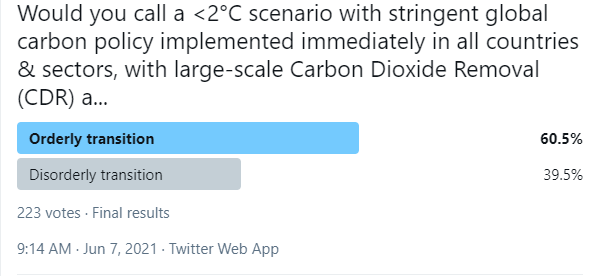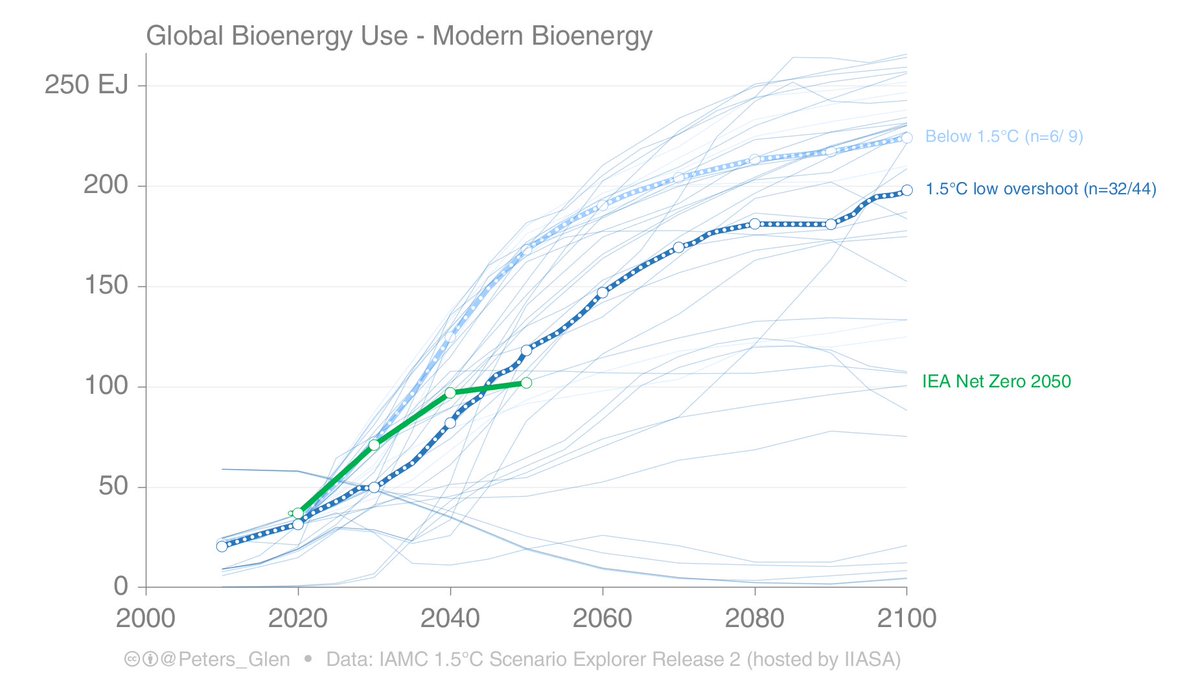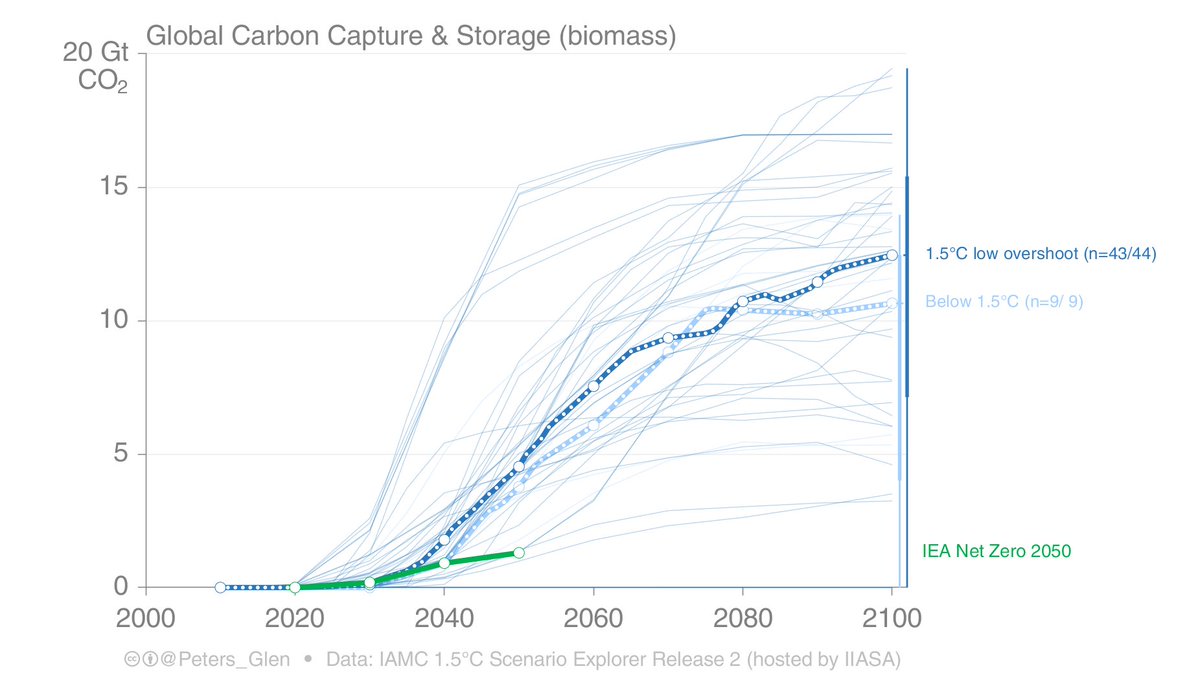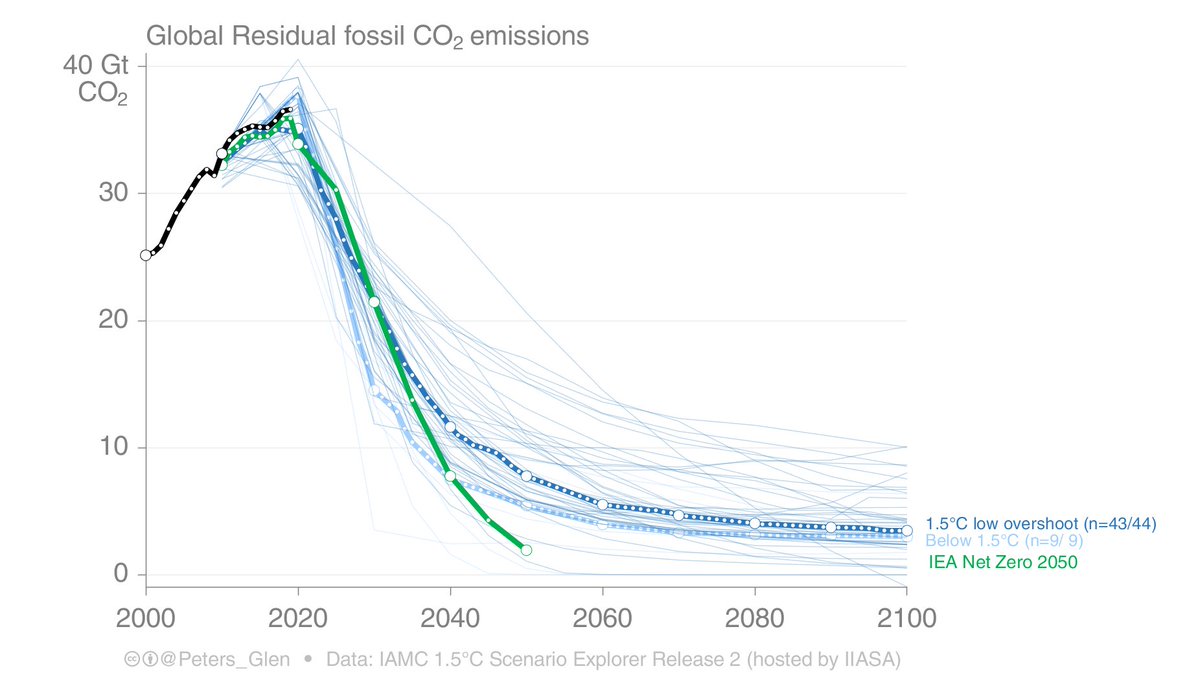
I had a poll the other day on "Orderly" versus "Disorderly" energy transitions. This wording comes from the @NGFS_.
I have troubles with saying immediate implementation of global 1.5°C climate policies is orderly. Perhaps in a model but not in reality.
A few thoughts...
1/
I have troubles with saying immediate implementation of global 1.5°C climate policies is orderly. Perhaps in a model but not in reality.
A few thoughts...
1/

A global carbon price of 150 or 200$/tCO₂ in 2025 is the difference between Orderly & Disorderly? (blue versus purple). You are kidding me?
Or a delay of 10 years and then a carbon price of 250$/tCO₂ is disorderly?
2/
Or a delay of 10 years and then a carbon price of 250$/tCO₂ is disorderly?
2/

This is reduction in coal in the various NGFS mitigation scenarios.
* Which one looks orderly?
* Which country would find implementing an economy wide climate policy overnight orderly?
3/

* Which one looks orderly?
* Which country would find implementing an economy wide climate policy overnight orderly?
3/


Personally, I think the language is wrong here.
To follow any of these scenarios is going to require massive and immediate change. I do not see in any way how this is going to be orderly.
Many examples of protests or elections based on very minor climate policy.
4/
To follow any of these scenarios is going to require massive and immediate change. I do not see in any way how this is going to be orderly.
Many examples of protests or elections based on very minor climate policy.
4/

We have to call mitigation to 1.5°C or <2°C for what it is. It will be a monumental push from a diverse range of actors. Some people will be pissed, big time!
An "orderly" transition will probably mean we miss <2°C. We need disruption. I don't see how this can be avoided.
5/
An "orderly" transition will probably mean we miss <2°C. We need disruption. I don't see how this can be avoided.
5/
Kevin Anderson @KevinClimate talks about laminar versus turbulent flow:
I agree with Kevin on the principal, but it is not how I would characterise IAMs.
I would say the changes in IAMs (or consequences of changes) are rather disruptive (turbulent?).
6/
https://twitter.com/KevinClimate/status/1397822310233554945
I agree with Kevin on the principal, but it is not how I would characterise IAMs.
I would say the changes in IAMs (or consequences of changes) are rather disruptive (turbulent?).
6/
While Kevin & I may split hairs on how to frame 1.5°C in IAMs, I think we both would agree that 1.5°C will require disruptive change.
Back to the original tweet. I have problems calling a cost-optimal 1.5°C scenarios "orderly", there is nothing orderly about 1.5°C scenarios!
7/
Back to the original tweet. I have problems calling a cost-optimal 1.5°C scenarios "orderly", there is nothing orderly about 1.5°C scenarios!
7/
[Noting all IAMers will disagree with me, as they are using model speak for a globally harmonised climate policy in all regions & sectors. Keep the model speak out of communication to a broader public, I say...]
8/8
8/8
• • •
Missing some Tweet in this thread? You can try to
force a refresh















